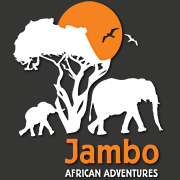Namib Naukluft Park Overview
At 35,000 square miles in size, the Namib-Naukluft National Park is one of the largest and may be the world’s oldest desert. The prehistoric Welwitschia plants are testimony to its age and give us a glimpse into the adaptations plants and animals make in an extremely hostile environment.
Areas of interest include Walvis Bay and Sandwich Harbor just outside the park on the coast, the “Moonscape” of the Swakop Canyons, Sesriem Canyon and Sossusvlei, where one will find the highest sand dunes in the world. The Naukluft mountains offer massive rock formations and heavily vegetated riverbeds where Mountain zebra, springbok, kudu, rock rabbits and Black eagles are frequently seen.
Climate
You won’t see much rain in this enormous park, even though summer (November to April) is regarded as the region’s Wet season. The only significant precipitation – if you can call it that – comes in the first few months of the year; those trekking in the mountains should beware of flash floods. Sub-zero temperatures can occur in winter (May to October), but these are restricted to the park’s higher altitudes.
NAMIBIA TOP DESTINATIONS
› Damaraland› Etosha National Park
› Namib Naukluft National Park
› Skeleton Coast
› Sossusvlei
› Waterberg Plateau Park
Namib Naukluft National Park
Namib-Naukluft National Park consists of different sections with different entry points. The park can be visited on an organized tour or independently, on a self-drive safari. The main routes to and within the park are open to normal 2WD cars. Permits are required for minor roads and a 4x4 vehicle is recommended.
Most people who visit the park come to see the Sossusvlei area, which is located about 360km/223mi from Windhoek by car and accessed through the Sesriem entry point. The main point of entry into Namibia is Hosea Kutako International Airport (WDH) located 40km/25mi east of Windhoek. Both self-drive visitors and people who’ve booked an organized safari will usually start their trip by 4x4 in Windhoek.
The park is not primarily a wildlife destination, but quite a few species are easily encountered. Seeing a herd of oryx walking between the red dunes in the Sossusvlei area is an unforgettable sight. To see more wildlife, you need to go to other areas of the park which are less visited. The Naukluft massive is primarily a hiking destination and Hartmann's mountain zebra are easily spotted here.
Namib-Naukluft is a great birding destination with over 200 species recorded. The area around the dunes of Sossusvlei is extremely dry and although there are some interesting species to be found, such as the dune lark, this is not the prime birding area. For prime birding, head for the Naukluft Mountains where many more species are present and easier to spot. Sandwich lagoon on the coast is great for Palearctic waders in the Wet season. Migrants are present from November to April.
Best Time to Visit
January and February are good months to visit Aberdare, as are June to September.March to May is the heavy rainy season and should be avoided because the roads become impassable.There may also be some access problems from October to December.








